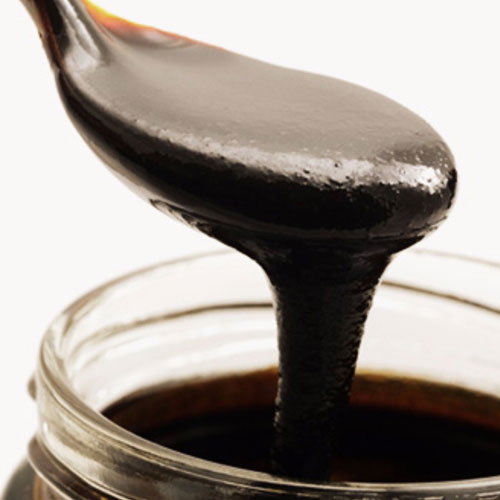
Apples (Mansanas)
Round crisp fruit, usually red or green



Baking powder
Mixture of baking soda, powdered acid and cornstarch

Baking soda
White powder used as leaving agent in bread making (powdered base)

Banana (Saging)
Long curved fruit with a thick skin, usually yellow in color when ripe. Grow in clusters




Bell pepper (Siling Lara)
Bell pepper, (Capsicum annuum), also called sweet pepper or capsicum, pepper cultivar is grown for its thick, mild fruits. Bell peppers are used in salads and in cooked dishes and are high in vitamin A and vitamin C. The large furrowed fruits are technically berries and can be green, red, yellow, or orange.



Bottle Gourd (Upo)
Also called white-flowered gourd or calabash gourd (Lagenaria siceraria), running or climbing vine of the gourd family (Cucurbitaceae), native to tropical Africa but cultivated in warm climates around the world for its ornamental and useful hard-shelled fruits. The young fruits are edible and are usually cooked as a vegetable.



Broccoli
Large flowering head of a plant belonging to the species Brassica oleracea var. italica. Usually green in color


Brussel sprouts
Small, round heads or buds (usually green in color) of a plant belonging to the group Gemmifera.



Cabbage (Repolyo)
A large, round head of a plant belonging to the species Brassica oleracea, densely surrounded with green, white or purple leaves











Chinese White cabbage (Pechay tagalog)
Also called spoon cabbage (B. rapa, variety chinensis), has glossy dark green leaves and thick crisp white or green stalks in a loose head. Young tender plants are often sold as “baby bok choy” and have a milder flavour. The plant is commonly used in stir-fries and is especially popular in Asian cuisine.





Coffee (Kape)
Processed and dried seeds of coffee berries.




Cornstarch
Fine white powder obtained from wet-milling of corn kernels.

Crackers
Thin, crispy flour-based snack.



Eggplant (Talong)
A long ovoid vegetable with dark purple skin scientifically known as Solanum melongena.




Flour (Harina)
Ground cereal grains, seeds or roots used for bread, pastry, cookies and cracker production.



Frostings
Sweet and creamy mixture usually used as a decorative ingredient for cakes


Garlic (Bawang)
Bulb part of the plant (Allium sativum) in a formed of cloves. Has a strong smell and taste, usually consumed as a spice.


Gelatin
Type of protein derived from collagen

Ginger (Luya)
Rhizome part of the plant (Zingiber officinale). Has a pungent smell and taste and usually consumed as beverage (ginger tea) or as a spice.

Grapes (Ubas)
Small juicy oval/round fruit, usually green, red, purple or black in color. Grow in clusters


Honey
Thick, viscous liquid , with color ranging from light yellow to dark brown, produced by bees using nectars or plant secretions.





Kidney Beans (Patani)

Usually a kidney-shaped seed or pod of plants belonging to the Leguminosae family


Lamb (Mutton); (Tupa)
Meat from sheep (Ovis aries)

Leeks (Kutsay)
Bundled leaf sheets that is cylindrical in shape. Derived from the plant (Allium ampeloprasum)







Melons (watermelon, cantaloupe, honeydew) [(Pakwan, Milon, Milong tagalog)]
Large, round juicy fruit with a thick rind.





Mustard (Mustasa)
Usually a yellow, spicy condiment made from the seeds of the mustard plant (Sinapis hirta).


Napa Cabbage (Pechay baguio)
Napa cabbage (Brassica rapa, var. pekinensis), also called pechay Baguio in the Philippines, a form of Chinese cabbage is cultivated for its edible leaves. Napa cabbage is widely grown in eastern Asia and is commonly used to make kimchi, a traditional Korean dish made of spicy fermented vegetables.





Onion (Sibuyas)
Grown for its edible bulb. The onion is likely native to southwestern Asia but is now grown throughout the world, chiefly in the temperate zones. Onions (Allium cepa) are low in nutrients but are valued for their flavor and used widely in cooking. They add flavor to dishes such as stews, roasts, soups, and salads and are also served as a cooked vegetable.






Pears (Peras)
Sweet fruit of the plant Pyrus communis, with yellow or green skin. Has a round base and a slightly pointed top.


Pineapple (Pinya)
Large oval-shaped fruit with a thick rind, crown of leaves and yellow juicy flesh. The fruit (Ananas comosus) is composed of 100-200 fused berry-like fruits with spiny margins.



Popcorn
Corn (Zea mays) kernels that pop open when heated / cooked.



Potato chips/crisps and snacks
Crunchy potato derivatives that are either deep-fried, baked, popped, or kettle-cooked.


Rice (Bigas / Kanin)
The seed of the grass species Oryza sativa. One of the widely consumed staple food for a large part of the world's human population, especially in Asia.


Salt (Asin)
Food-processing industries as well as homes use salt as a preservative or seasoning or both. It is employed for curing and preserving hides and as a brine for refrigeration purposes (e.g. ice cream making).


Shellfish (Tahong, talaba, tulya, alimasag, etc..)
Meat of shrimps, crabs, lobster, clams, mussels, oysters and the like.


Soft drinks
Made up of water (mostly carbonated), flavoring and sweetener.


Soursop (Guyabano)
It has a green, soft spine heart-shaped/oblong/ ovoid fruit with a dark green, leathery skin. The fruit (Annona muricata) is large, usually measures 8 to 12 inches and weighs up to 2.5 kilos. It has creamy and delectable flesh which contains many black to brown seeds which are hard and inedible. The skin is thin, with soft, white and fleshy pulp with sour flavor.


Spices and herbs
Plant derivatives (seeds, leaves, bark, etc...) usually used for flavoring food.


Squash (Kalabasa)
Fruit of the squash plant (Cucurbita moschata Duch). The fruit is usually served as a cooked vegetable, and the seeds and blossoms may also be cooked and eaten.


String Beans / Yard long beans (Sitaw)
Also known as long-podded cowpea, asparagus bean, snake bean, or Chinese long bean. The crop is also an ingredient of the original Ilocano dish, pinakbet or mixed veggies with bagoong and some meat chunks.


Sugar (Asukal)
Fine, crystalline powder from sugar cane (Saccharum officinarum) used as a sweetener.




Tomato (Kamatis)
Tomato (Solanum lycopersicum) is cultivated extensively for its edible fruits. The fruits are commonly eaten raw in salads, served as a cooked vegetable, used as an ingredient of various prepared dishes, and pickled. Additionally, a large percentage of the world’s tomato crop is used for processing; products include canned tomatoes, tomato juice, ketchup, puree, paste, and “sun-dried” tomatoes or dehydrated pulp.


Turmeric (Luyang Dilaw)
Turmeric (Curcuma longa) is a spice that is commonly used in Asian food. It has a warm, bitter taste and is frequently used to flavor or color curry powders, mustards, butters, and cheeses. But the root of turmeric is also used widely to make medicine. It contains a yellow-colored chemical called curcumin, which is often used to color foods and cosmetics.


Vanilla
Usually a dark substance derived from Vanilla (V. planifolia) pods. Used as a flavoring agent.


Vegetable oils (Mantika)
Viscous liquid derived from plants, usually with distinct odor and flavor. Usually utilized for frying foods.


Vegetable Pear or Chayote (Sayote)
Chayote fruit (Sechium edule) can be boiled, baked, or fried as a vegetable and included in sauces, puddings, tarts, and salads. The composition of the flesh is similar to that of many other cucurbits. Other parts of the plant are eaten as well, including the subterranean root (which is around 20% carbohydrate), young leaves, and tender shoots.


Vinegar (Suka)
Sour liquid with pungent odor, made from fermented coconut water or sugar cane extract.





















































